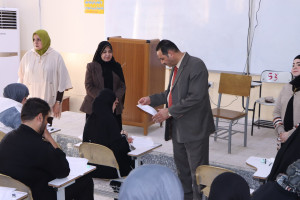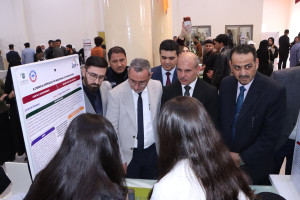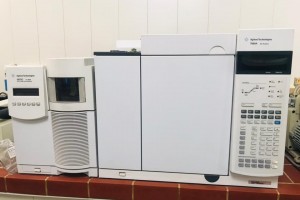
The College of Education for Pure Sciences in the Department of Physics at the University of Basrah discussed a master's thesis on studying the nuclear structure of some isobars (A=82) and isotones (N=90) using the IBM-1 and IBM-2 models.
The message presented by the researcher (Abdullah Hussein Abdali) included
The nuclear structure of some isobars (A = 82) and isotones (N = 90) has been studied in the framework of the Interacting boson model in its two forms, IBM-1 and IBM-2. The study included calculating the positive energy levels of symmetry and researching the electromagnetic properties, where the transition probability of the reduced electric quadrupole B (E2) was calculated, the electric quadrupole moment Q and the ratios of the transition probability of the reductive electric quadrupole B (E2) were also obtained. IBM-2 predictions were obtained For magnetic dipole transition potential B(M1), electromagnetic mixing ratios and mixed symmetry states are determined. The IBM-1 model was also applied to study the potential energy surface to determine the nuclear shape of some isobars A = 82 and isotones N = 90.
I got the message
Through the use of the energy Hamiltonian and the effects of the electric quadruple transition and the dimagnetic transition, the energy levels, the electric and magnetic transitions, the ratios of B (E2) and the mixing ratio were calculated, as well as the study of the potential energy surface to determine the shape of the core, where the results showed a good agreement between the expectations of IBM-1 and IBM-2 compared to the practical . IBM model calculations for the electric quadruple torque, where in the isobars A = 82 the value was small, while the isotones N = 90 the value of the quadruple torque was large, meaning that the amount of distortion was large, as well as the magnetic diode torque was close to the available practical values and compatible with the signal.
The calculations of the IBM-2 model showed that the lowest level of mixed symmetry in the isobars A = 82 and isotones is the level. Hamtillion energy parameters and the results obtained in the study indicate that the isobars A = 82 are transitional nuclei between the determinations U (5) and O (6), while the isotones N = 90 are also transitional nuclei, but from the determination U (5) to SU (3). By comparing the theoretical results obtained in the study with the available practical values, the model's ability to describe the nuclear properties of these isobars and isotones is shown.









